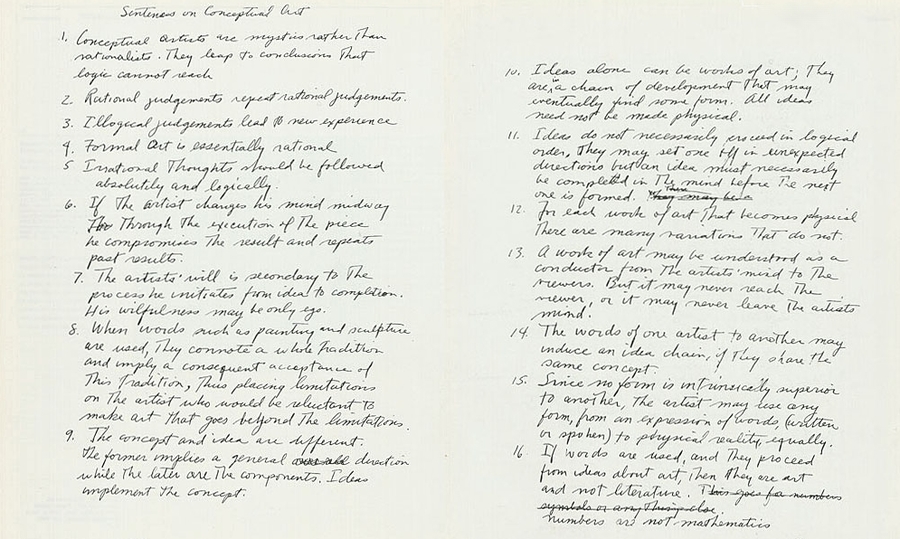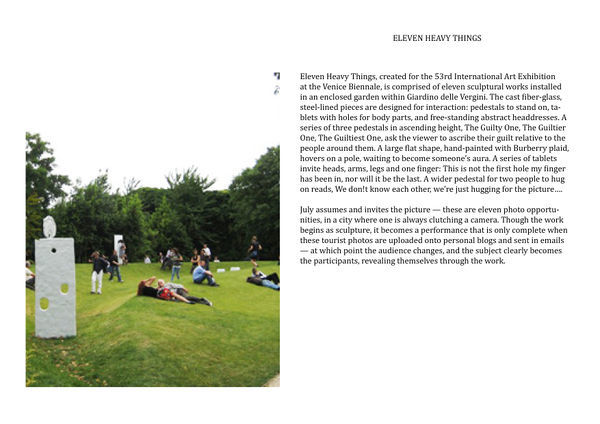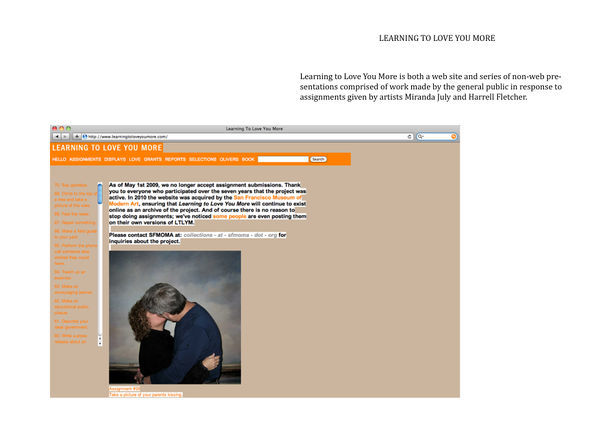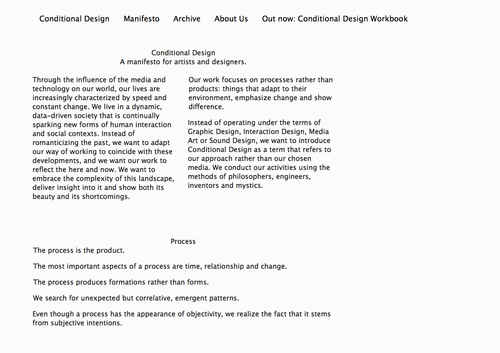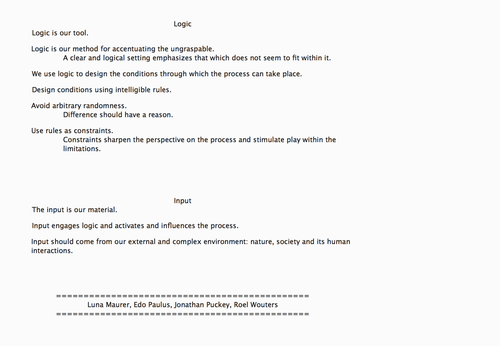PROJECT Q2 / TOOLS OF THE TRADE
PARAGRAPHS ON CONCEPTUAL ART / SOL LEWITT
To work with a plan that is preset is one way of avoiding subjectivity. It also obviates the necessity of designing each work in turn. The plan would design the work. Some plans would require millions of variations, and some a limited number, but both are finite. Other plans imply infinity. In each case, however, the artist would select the basic form and rules that would govern the solution of the problem. After that the fewer decisions made in the course of completing the work, the better. This eliminates the arbitrary, the capricious, and the subjective as much as possible. This is the reason for using this method.
When an artist uses a multiple modular method he usually chooses a simple and readily available form. The form itself is of very limited importance; it becomes the grammar for the total work. In fact, it is best that the basic unit be deliberately uninteresting so that it may more easily become an intrinsic part of the entire work. Using complex basic forms only disrupts the unity of the whole. Using a simple form repeatedly narrows the field of the work and concentrates the intensity to the arrangement of the form. This arrangement becomes the end while the form becomes the means.
If the artist carries through his idea and makes it into visible form, then all the steps in the process are of importance. The idea itself, even if not made visual, is as much a work of art as any finished product. All intervening steps –scribbles, sketches, drawings, failed works, models, studies, thoughts, conversations– are of interest. Those that show the thought process of the artist are sometimes more interesting than the final product.
FIRST CONCEPT / TEXT
dagelijkse gebruiksvoorwerpen zijn vaak expressieloze voorwerpen. deze voorwerpen hebben meestal 1 doel en zijn zo gemaakt dat ze gebruiksvriendelijk zijn voor iedereen. gebruiksvoorwerpen hebben een mens nodig om, die het voorwerp gebruikt, om het voorwerp een functie te geven. een menselijke eigenschap is om zich aan iets te hechten. zo dus ook aan alledaagse gebruiksvoorwerpen. dit geeft een voorwerp een expressie, een waarde.
na het lezen van dunne and raby en ‘paragraphs on conceptual art’ van sol lewitt, ben ik me gaan focussen op critical design en conceptual art. ik wil een alternatief bieden voor gebruiksvoorwerpen en deze aantrekkelijker maken, niet alleen esthetisch maar ook qua functie; ontwerpen om het bestaande te verbeteren en persoonlijker te maken zodat ze beter toe te passen zijn in het nu. hiermee bekritiseer je de bestaande structuur en de beperktheid van elektronische aparaten; vaak aparaten zonder enige emotionele toevoegingen.
door elementen handmatig aan een basisvorm toe te voegen wil ik apparaten emotionele waarde geven. zo laat je een gebruiksvoorwerp, een basisvorm, persoonlijk evolueren.
INSPIRATION
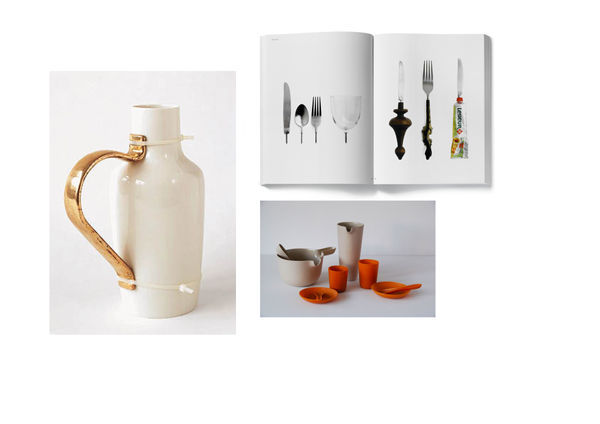 hella jongerius / kesselskramer / maaike seegers
hella jongerius / kesselskramer / maaike seegers
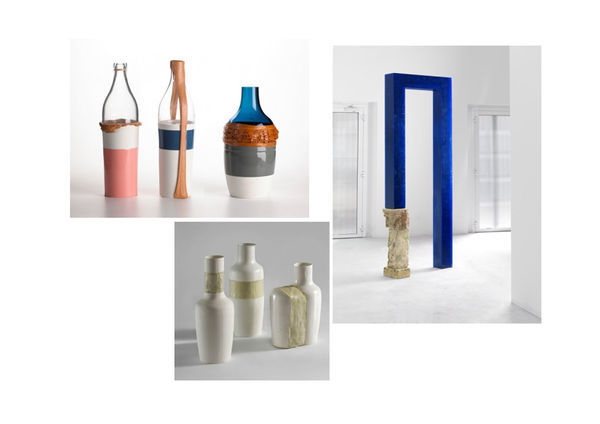 hella jongerius / hella jongerius / herbert hamak)
hella jongerius / hella jongerius / herbert hamak)
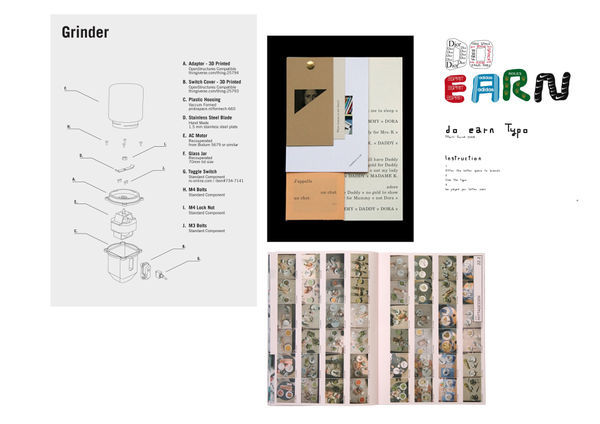 jesse howard / marti guixe / kesselskramer
jesse howard / marti guixe / kesselskramer
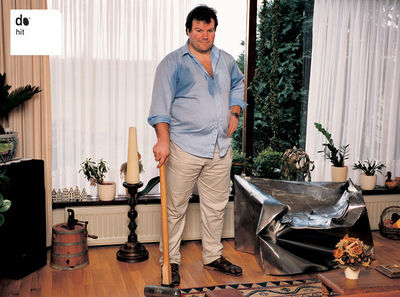 kessels/kramer do projects, where you have to do something with an object you buy
kessels/kramer do projects, where you have to do something with an object you buy
